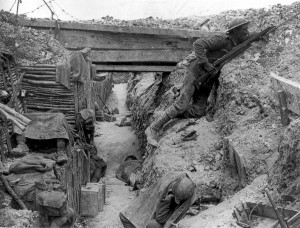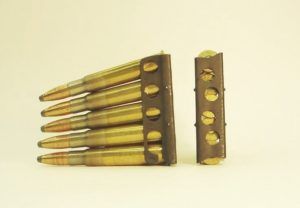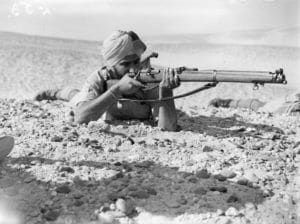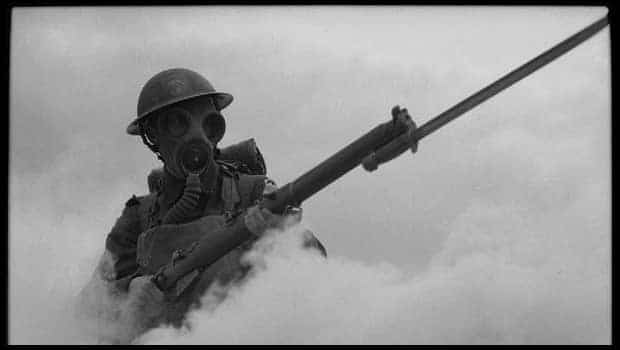Have you ever wondered what the best all around rifle is?
Not surprisingly, it depends on who you ask. For some people its an AR rifle or AK rifle variant. What surprises me, however, is how often that question has been answered with the British Enfield. The classic Enfield variant is the No. 1 Mk. III Short Magazine Lee Enfield, or SMLE—hence the moniker I have used with my internet content creation for several years. Despite my fondness for the design, I had never shot an Enfield rifle until the summer of 2013 when a friend, and fellow GunTuber, donated a 1918 vintage SMLE to me. Let’s dig into a bit of this famed rifle’s history.
The Story of the Enfield Rifle

The first of James Paris Lee’s creations was the Lee Metford, which came onto the scene in 1888 and replaced the Martini Henry single shot rifles. (Anyone see the movie Zulu?) This gun should look a bit familiar to you. It was available as a long rifle or as a cavalry carbine.
The Metford held 8-12 303 British bullets loaded with black powder, depending on the model. It incorporated a bolt action that was operated by hand to reload the rifle continuously. The problem was that, by its inception, the gun was already obsolete. The French had invented smokeless powder, which was more powerful and produced little smoke, which made the soldiers who used it harder to detect, allowing them to inflict damage at long range with greater ease. Even worse, the Metford’s magazine had to be loaded one round at a time.
The new German Mauser rifles could be rapidly reloaded with five round clips (as depicted in the image below). When the British fought the South African Boers from 1899-1902, they took a beating from the Boer farmers armed with German 7mm Mausers.

Attempts to convert the Metford to smokeless proved futile. But by 1907, the Metford was given a makeover with a medium length Enfield-made barrel of 25 inches, a 10 shot magazine that was loaded with five round clips, and smokeless powder ammunition. The No. 1 Mk III, the first of the true Enfield rifles, was born. With over seventeen million produced for worldwide service, the Enfield survived two world wars, and numerous other conflicts, and still sees action today, despite being dropped from official British service in 1957.

Shooting and Analysis
I put close to three hundred rounds through the 1918 made No. 1 Mk.III rifle. To be certain, this was not a perfect specimen, with its many dents, dings, and wood repairs. I also found that the barrel was shot out. In other words, so many rounds were put through it since it was made that normal sized 303 bullets were not a tight fit. While not ideal, I was still excited for the chance to shoot this legendary rifle.

Initial testing was performed at 50 yards distance. The rifle proved extremely fast while working the bolt. The fact that the gun cocks on closing the bolt and the lugs that lock the bolt in place are in the rear both serve to ensure speed and reliability, even with mud and/or grit in the action. The safety is located on the left side of the gun. Pushing it up engages the safety, disabling the trigger and bolt. Pushing it down disengages the safety, readying it to fire again.
Loading the gun with five round clips was simple, and the ejector bar flings the clips out of the way with little trouble. The 200-2000 yard adjustable rear sight notch and the front blade picks up very well, even though its shorter than some other rifles of the era. Shooting commercial ammunition was a piece of cake in the old Enfield. The recoil is pushy, but not snappy enough to hurt, and quick shots were easily managed. With quick successive shots, I achieved a 1.5 inch grouping at 50 yards. Considering how worn the bore is, I was pleasantly surprised with the performance. Even with a positive first impression, I was not satisfied with one initial test.
As many students of the Enfield know, the small British army that landed in Belgium a century ago to fight off the German invasion of France held off the Germans at Ypres before being pushed back. The Germans believed they were facing machine gun fire, but in reality, they were facing masses of British troops rapid firing their Enfields. This battle allowed the French to defend Paris and put the war into a stalemate, but also served to proliferate the Lee Enfield’s reputation for its legendary capability of throwing lead downrange. Indeed, the British tommy (soldier) was trained to fire fifteen rounds into a 300 yard target within one minute—many British troops could even double that. This is called the “mad minute.” Intrigued by this, I looked for video evidence of this phenomenon in action, and was unable to find any that showed the target. Naturally, that meant I had to set out to do it myself.
I did not have a 300 yard range, so 200 yards would have to do. I posted a silhouette on cardboard at that distance and let fly from a sitting position on the bench using Privi Partisan 174 grain full metal jacket military type bullets. My untrained hand managed sixteen rounds in one minute. You can check it out in the video embedded above. All rounds shot high with 11 striking the cardboard. Not stellar, but with a better bore, who knows? In any case, it was a fun day at the range for me.
Final Thoughts
The sun may have set on the British Empire, but the Enfield never left the light. Though rifle technology has become more advanced, the Enfield continues to hold its own with a track record that will continue to draw fans for years to come.
Featured image courtesy of Wikimedia Commons.


